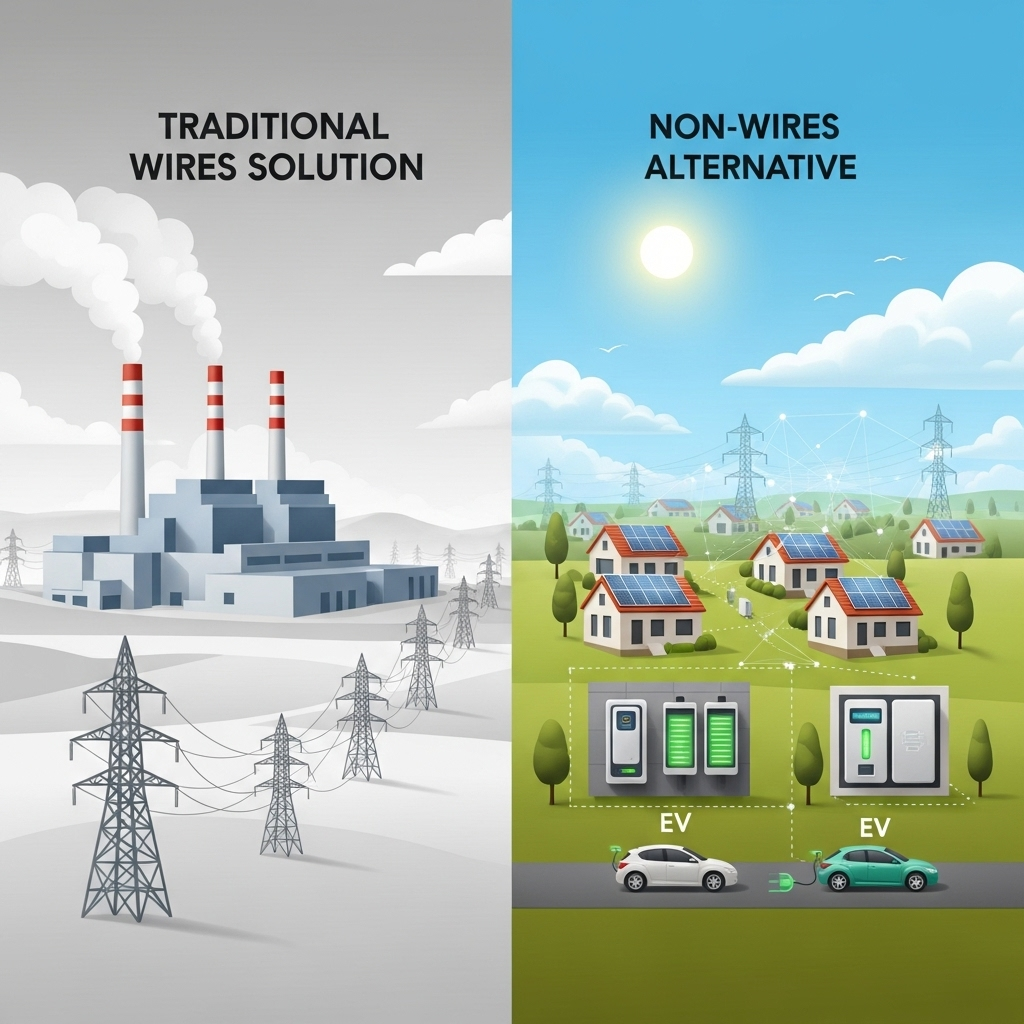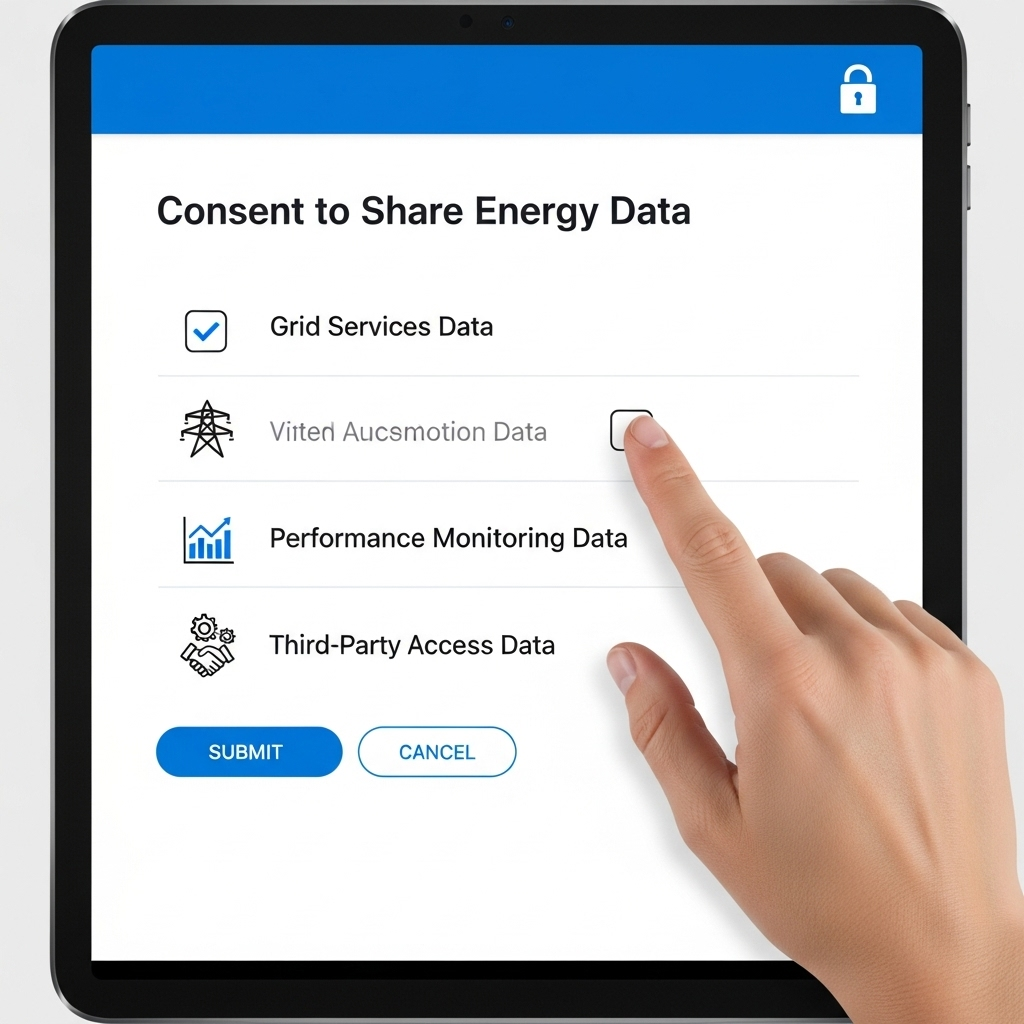Distributed Energy Resources (DERs), like your home solar panels and battery storage, are transforming our power grid. They offer energy independence and contribute to a more resilient electricity system. But this connectivity creates a new, critical challenge: securing the vast amounts of data these systems generate. Protecting this data is fundamental for maintaining grid stability, ensuring personal privacy, and building trust in our clean energy future.
As someone who has worked in the solar and energy storage industry for years, I've seen firsthand how the conversation has shifted from just generating power to managing and securing information. This guide provides a clear overview of DER data access, privacy concerns, and the cybersecurity measures needed to protect these valuable assets. You will gain the knowledge to make informed decisions about your energy systems and understand the policies shaping the industry.
Chapter 1: The Landscape of DER Data
Every component of a modern energy system, from solar inverters to battery management systems, is a source of data. Understanding what this data is, who uses it, and why it's valuable is the first step toward securing it. This information is not just a series of numbers; it tells a story about your energy habits and the health of the grid.
1.1 What Data Do DERs Generate?
DERs produce a continuous stream of operational and performance data. This includes:
- Energy Production: Real-time and historical data on how much power your solar panels are generating.
- Energy Consumption: Information on your household's electricity usage patterns.
- System Status: Health and diagnostic information from devices like solar inverters and batteries, including voltage, temperature, and state of charge.
- Grid Interaction: Data on the flow of electricity to and from the grid, including frequency and voltage levels.
This operational data reveals critical performance metrics about your system's efficiency. Understanding metrics like Depth of Discharge (DoD) and C-rate for your lithium batteries is fundamental not just for performance optimization but also for security monitoring. You can find a detailed breakdown of these key performance indicators in our ultimate reference on solar storage performance, which helps you interpret what your system is telling you.
1.2 Who Needs Access to DER Data?
Several parties have a legitimate interest in accessing DER data to ensure the grid operates smoothly and to offer you better services. These stakeholders include:
- You, the System Owner: To monitor your system's performance, track your energy savings, and ensure everything is working correctly.
- Utility Companies: To maintain grid stability, manage power flows, and forecast demand.
- DER Aggregators: Companies that bundle the capacity of many small DERs to participate in energy markets, often called virtual power plants.
- Equipment Manufacturers: For remote diagnostics, firmware updates, and product improvement. ANERN, for example, relies on performance data to enhance the reliability of our integrated ESS and LiFePO4 batteries.
The core issue is managing who gets access to what data and for what purpose. This brings up complex questions about data ownership and consent, which are central to building a trustworthy system. For a deeper look at this topic, you can explore the complexities of who owns DER data and the policies surrounding it.
Chapter 2: The Core Challenges: Privacy and Access Control
The data from your home energy system can reveal intimate details about your daily life—when you wake up, when you're on vacation, and what appliances you use. Protecting this information is not just a technical requirement; it's a matter of personal privacy. At the same time, grid operators need sufficient data to keep the lights on. Balancing these needs requires robust access control and clear consent frameworks.
2.1 The Privacy Dilemma
Smart meters and connected DERs can inadvertently create a detailed profile of a household's activities. Without proper safeguards, this information could be misused. The principle of data minimization—collecting only the necessary data for a specific, legitimate purpose—is a key strategy to mitigate this risk. You can learn more about how data minimization can still enable DER market participation without compromising privacy. There are many misconceptions about this topic, and it's helpful to separate myth from reality regarding smart meter data and home privacy.
2.2 Moving Toward Zero Trust Architecture
Traditional cybersecurity relied on a "perimeter defense" model—a digital wall around a network. This approach is inadequate for DERs, which are by nature decentralized and connected via the public internet. The industry is now moving towards a Zero Trust Architecture (ZTA). ZTA operates on a simple but powerful assumption: trust no one, verify everything. Every request for data access, whether from inside or outside the network, must be authenticated and authorized.
This model is a significant shift from older security methods. The U.S. Department of Energy has even backed projects using this approach, recognizing its potential to secure energy exchanges. A case study on a DOE-backed project highlights its effectiveness. Implementing ZTA requires a different mindset and toolset, focusing on identity and device verification rather than network location. You can compare the policy impacts of zero trust versus perimeter defense for DERs to understand why this change is happening.
2.3 Managing Consent and Data Sharing
As a DER owner, you should have control over your data. This means clear, transparent consent mechanisms are necessary. You should be able to easily grant, deny, or revoke access for third parties like aggregators. Effective data governance involves establishing clear roles and maintaining detailed logs of all access requests. This helps stop data sprawl and ensures accountability.
For those navigating this complex area, a comprehensive guide to compliant DER data sharing and consent can provide a clear path forward. Building a system based on explicit consent fosters trust and encourages wider adoption of DER technologies.
Chapter 3: Building a Secure DER Ecosystem: Cybersecurity Best Practices
Securing a distributed energy grid requires a multi-layered approach, from the hardware itself to the networks that connect it. As a manufacturer of core components like high-performance LiFePO4 batteries and integrated home energy storage systems, we build our products with security as a foundational principle. A reliable and secure ESS, which combines the battery, solar inverter, and management system, is your first line of defense.
3.1 Foundational Cybersecurity Controls
The National Institute of Standards and Technology (NIST) Cybersecurity Framework provides a comprehensive structure for managing cyber risks. It is organized around five key functions: Identify, Protect, Detect, Respond, and Recover. Applying this framework to DERs involves specific technical controls that manufacturers, installers, and owners should be aware of.
Here are some of the most critical controls for securing grid-edge devices:
| Control | Description | Purpose |
|---|---|---|
| Authentication | Verifying the identity of users, devices, and systems before granting access. This includes using strong passwords and multi-factor authentication. | Prevents unauthorized access and enforces the principle of least privilege, where users only have access to the data they absolutely need. |
| Encryption (TLS) | Using Transport Layer Security (TLS) to encrypt data as it travels between your DER and the internet. | Protects against eavesdropping and "man-in-the-middle" attacks, ensuring data integrity and confidentiality. |
| Secure Firmware Updates | Ensuring that software and firmware updates are digitally signed and delivered through a secure channel. The ability to perform a "rollback" to a previous version is also critical. | Prevents malware from being installed through malicious updates and allows for quick recovery from a faulty update. |
| Logging and Monitoring | Recording all system events, access requests, and errors in detailed logs. | Helps detect suspicious activity, troubleshoot issues, and provides a forensic trail in the event of a security incident. |
| Physical Security | Protecting the physical hardware (inverters, batteries, communication gateways) from tampering or unauthorized physical access. | Prevents attackers from directly compromising a device by physically connecting to it or manipulating its hardware. |
Implementing these controls is not just a best practice; it is often a requirement to pass utility interconnection cyber reviews for storage systems. Vendors who can demonstrate these capabilities are better positioned to pass audits and integrate with the grid. There are several key cybersecurity controls that help DER vendors pass these audits.
3.2 The Role of Secure Hardware and Standards
Cybersecurity starts with the hardware. Devices like solar inverters and energy storage systems must be designed for security from the ground up. This includes features like secure boot processes, hardware-based encryption, and tamper-resistant casings. At ANERN, our off-grid solar solutions and home ESS products are developed with these principles in mind, providing a reliable foundation for your energy independence.
Standards are crucial for creating an interoperable and secure ecosystem. Following a blueprint like the NIST CSF for grid-edge ESS and inverter security helps ensure that different products can communicate securely. As the industry matures, adherence to these standards will become a non-negotiable requirement for all market participants.
Chapter 4: The Path Forward: Policy, Governance, and Shared Responsibility
Technology alone cannot solve the DER security challenge. A supportive policy environment and clear governance structures are needed to create a system that is secure, private, and efficient. This is a shared responsibility among regulators, utilities, manufacturers, and system owners.
4.1 The Evolving Regulatory Landscape
Governments and regulatory bodies are actively developing new rules for DER data access and security. For example, new policies are defining how to build zero-trust data access for DERs. For companies operating in this space, such as DER aggregators, having a clear policy roadmap that covers consent, TLS, and certificate revocation is critical for compliance and market access.
4.2 Centralized Data Hubs: A Potential Solution?
One model gaining traction in Europe and elsewhere is the creation of centralized energy data hubs. These platforms act as a neutral, secure intermediary for data exchange. They can empower consumers by giving them a single place to view their data and manage third-party access permissions. However, the governance of these hubs is a complex issue. The question of whether centralized energy data hubs are the answer for DER privacy is still being debated, but they represent a promising direction for streamlining secure data sharing.
Final Thoughts on a Secure Energy Future
The transition to a decentralized grid powered by solar and storage is well underway. The immense benefits of this shift—resilience, cost savings, and sustainability—depend on our collective ability to secure the data that makes it all work. It requires a combination of secure hardware, modern cybersecurity practices like Zero Trust, and forward-thinking policies that prioritize both privacy and grid reliability.
By understanding the risks and implementing the best practices outlined here, you can protect your investment, safeguard your privacy, and play an active role in building a more secure and independent energy future. The responsibility is shared, but the rewards are universal.
Disclaimer: This information is for educational purposes only and does not constitute legal or financial advice. You should consult with a qualified professional for guidance specific to your situation.





Leave a comment
All comments are moderated before being published.
This site is protected by hCaptcha and the hCaptcha Privacy Policy and Terms of Service apply.